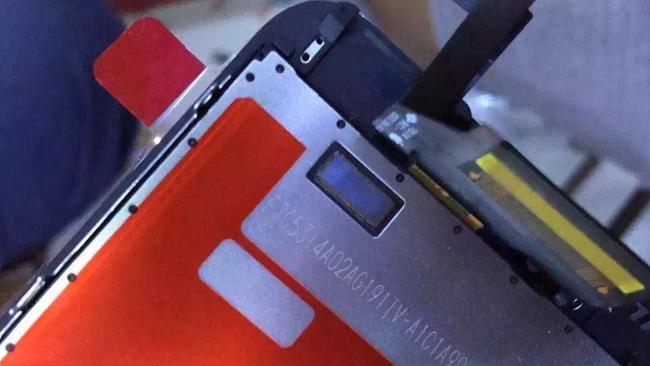iPhone screens and parts surface online
With the next iPhone launch as little as a month away, photos of screen panels and parts have appeared online recently.

With the next iPhone launch as little as a month away, photos of screen panels and parts have appeared online recently.
The French website nowhereelse.fr has published what is claimed to be photos of the new iPhone screen panel which hint that Apple might implement its force touch feature on the device.
It would be totally consistent with Apple’s past behaviour to migrate a feature like force touch from one environment (a Mac track pad) to another.
If this is the case, users would have access to 2 levels of choices whenever they place their fingers on the screen: one where they press lightly, and the other more heavily.
The assertion around force touch is based on the screen frame having a 0.2mm thicker casing, but that’s as clear as it gets.
Recently nowhereelse.fr also posted several images which purport to be plastic bags of touch ID home button rings, camera rings, and flex cables that connects to the rear facing camera.
If true, they are components that somehow were diverted on their way to the production line.
On one level, they tell as little about the design of the new device. But they give us a few clues. First, there will still be a home button on this latest iPhone.
And the camera rings suggested that the rear facing camera will still protrude a little from the back.
It’s hard to guess the direction Apple may go, but it would be a radical departure for Apple to ditch the highly successful touch ID-enabled home button in favour of authenticating on the screen further down the track.
With touch-ID on the home button, you can authenticate while holding the phone in one hand. Doing it with the screen would require two. What’s more, those who’ve taken carriage of the iPhone’s development seem to have understood the adage: “If it ain’t broke, don’t fix it.”
According to the Asian IT site digitimes.com, makers in the iPhone supply chain had started delivering parts and components to iPhone manufacturers Foxconn Electronics and Pegatron more than a month ago.
The money is on Apple this year not radically departing from the iPhone 6 which has proved one of its most successful devices. And that we’re more likely to see an iPhone 6S than an iPhone 7, but nothing is for certain.
There’s still room for some tweaks.
It would make sense for Apple to increase the resolution of its front and back facing cameras from the present 8 and 1.2 megapixels.
With selfies the rage, 1.2 megapixels is a long way behind rival devices with as much is 8 megapixel front facing snappers. This would also bring better quality encounters on FaceTime and video conferencing in general.
There is an argument for Apple bringing the better optical image stabilisation of the iPhone 6 Plus camera to the smaller model.
Another area of interest is whether Apple might enter the realm of 4K, or ultrahigh definition, video shooting. With 4K TVs now more popular and affordable, there might be a tipping point at which Apple begins catering to this market.
While nothing is as certain as death and taxes, Apple has proven a creature of habit when it comes to the timing of iPhone launches, so we shouldn’t be left with unanswered questions for much longer.


